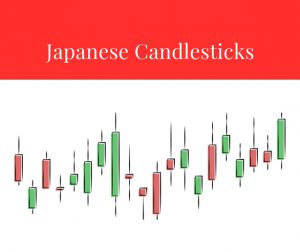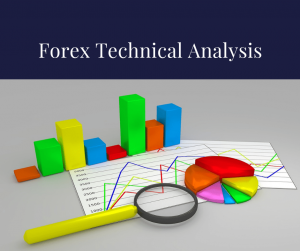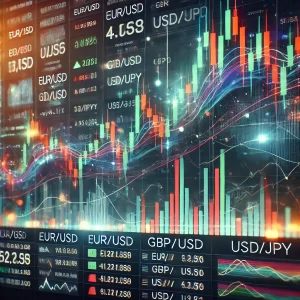Introduction
The EUR/USD currency pair is among the most closely watched instruments in the global forex market. As of August 18, 2025, a notable technical pattern has emerged on the EUR/USD chart, signaling potential opportunities for traders. This detailed analysis explores the inverse head-and-shoulders pattern, examines the key support and resistance levels, evaluates the market outlook, and considers the impact of upcoming economic events and central bank policies.
Understanding The Inverse Head-And-Shoulders Pattern
The inverse head-and-shoulders pattern is widely recognized among technical analysts as a strong bullish signal. It typically forms after a prolonged downtrend and indicates a potential reversal of the current trend. This pattern consists of three troughs, where the middle trough, known as the head, is the deepest, while the two outer troughs, known as shoulders, are shallower. A neckline is drawn connecting the highs between the troughs, and a breakout above this line often signals the beginning of an upward trend.
In the case of EUR/USD, this pattern has developed over recent weeks, suggesting that the pair may experience a short-term rally if the bullish scenario materializes. Traders are closely monitoring the price action around the neckline to determine optimal entry and exit points.
Key Entry And Exit Levels
According to technical forecasts, traders were advised to consider buying EUR/USD at 1.1705. The target for this bullish trade is 1.1827, representing a potential gain of approximately 120 pips from the suggested entry level. On the other hand, bearish traders looking to capitalize on a reversal or failure of the bullish breakout may consider selling at 1.1827 with a target of 1.1600. These levels provide clear guidelines for risk management and potential profit-taking, emphasizing the importance of discipline in trading decisions.
The risk-to-reward ratio for both scenarios is carefully considered, and traders are encouraged to set stop-loss orders to limit potential losses. The effectiveness of this strategy depends heavily on market volatility and upcoming economic developments.
Technical Indicators Supporting The Bullish Outlook
Several technical indicators reinforce the bullish outlook for EUR/USD. Moving averages suggest a potential upward trend, with the 50-day and 200-day moving averages showing a possible convergence that typically precedes a bullish breakout. Relative Strength Index (RSI) levels indicate that the pair is moving out of oversold territory, further supporting the possibility of upward momentum.
Additionally, Fibonacci retracement levels provide insight into potential support and resistance zones. A retracement level near 1.1700 acts as strong support, while 1.1827 is a key resistance level that, if broken, could open the door for further gains. Traders often combine these indicators to create a holistic view of market conditions and enhance the accuracy of their trading strategies.
Fundamental Factors Influencing EUR/USD
While technical analysis offers valuable guidance, fundamental factors play an equally important role in determining the direction of EUR/USD. In the coming weeks, traders will closely monitor data from the Eurozone and the United States, including inflation figures, employment statistics, retail sales, and industrial production.
Central bank actions remain particularly critical. The European Central Bank’s (ECB) monetary policy decisions, including interest rate adjustments and asset purchase programs, directly impact the euro’s strength. Similarly, the Federal Reserve’s policies influence the U.S. dollar and, consequently, the EUR/USD exchange rate. Market participants are keenly awaiting statements from central bank officials and the release of key economic reports to adjust their positions accordingly.
Impact Of Economic Calendar On Trading Decisions
The economic calendar for late August 2025 features several high-impact events that may affect EUR/USD volatility. Preliminary Purchasing Managers Index (PMI) data from Germany and the Eurozone, as well as inflation reports from the United States, are expected to generate significant market movements.
Traders must remain vigilant, as unexpected outcomes can quickly reverse short-term trends. For instance, a stronger-than-expected inflation report in the United States could strengthen the dollar and push EUR/USD lower, even in the presence of bullish technical patterns. Conversely, weaker economic data from the Eurozone could provide additional momentum for an upward rally in EUR/USD.
Risk Management And Trading Strategies
Effective risk management is essential when trading EUR/USD, especially during periods of heightened volatility. Traders are encouraged to use stop-loss orders to protect their capital and consider position sizing strategies to manage exposure. Additionally, monitoring correlation with other currency pairs, such as USD/JPY and GBP/USD, can provide valuable context for EUR/USD price movements.
Swing trading and intraday strategies are both viable approaches for taking advantage of the inverse head-and-shoulders pattern. Swing traders may hold positions for several days to capture the full potential of the rally, while intraday traders may focus on shorter-term price movements around key support and resistance levels.
Potential Scenarios For EUR/USD
Several scenarios could unfold for EUR/USD in the coming weeks. In a bullish scenario, a breakout above the neckline could drive the pair toward 1.1827 and potentially higher levels if market sentiment remains positive. Confirmation of this trend may be supported by strong economic data from the Eurozone or dovish signals from the Federal Reserve.
In a bearish scenario, failure to break above the neckline or negative economic news from the Eurozone could lead to a decline toward 1.1600. Traders should be prepared for both outcomes and adjust their strategies based on evolving market conditions.
Conclusion
The EUR/USD currency pair presents an intriguing trading opportunity as of August 18, 2025. The formation of an inverse head-and-shoulders pattern suggests a potential bullish trend, with clear entry and exit levels providing guidance for traders. However, the interplay of technical and fundamental factors, including central bank policies and key economic data, will ultimately determine the pair’s direction.
Traders should combine technical analysis with sound risk management practices and stay informed about upcoming economic events to navigate the forex market successfully. By understanding the nuances of the EUR/USD chart and responding strategically to market developments, traders can position themselves to capitalize on potential opportunities while mitigating risks.



